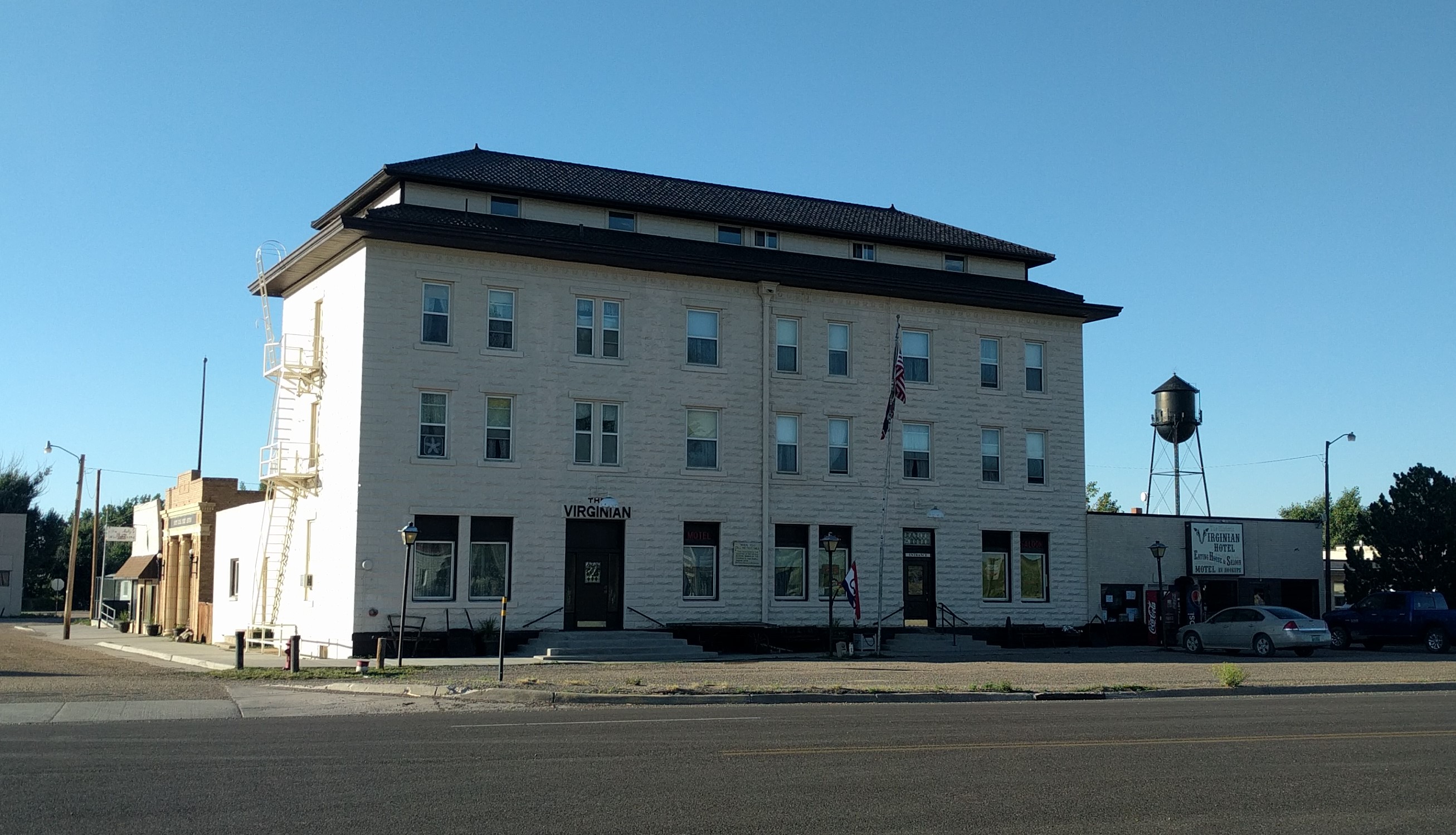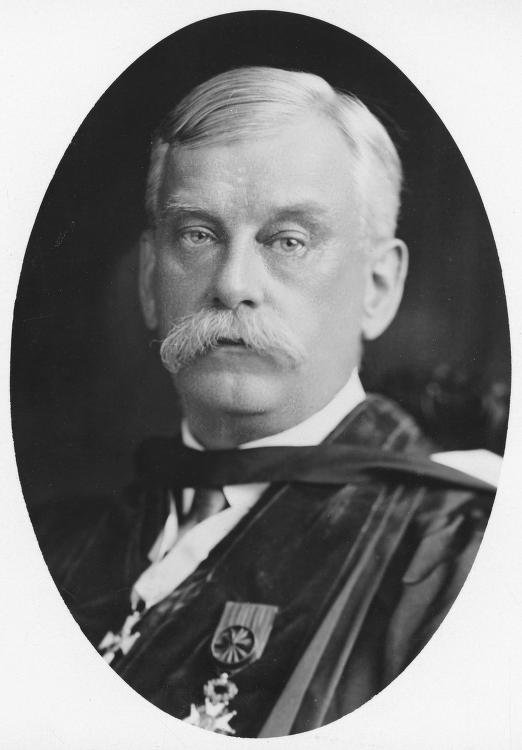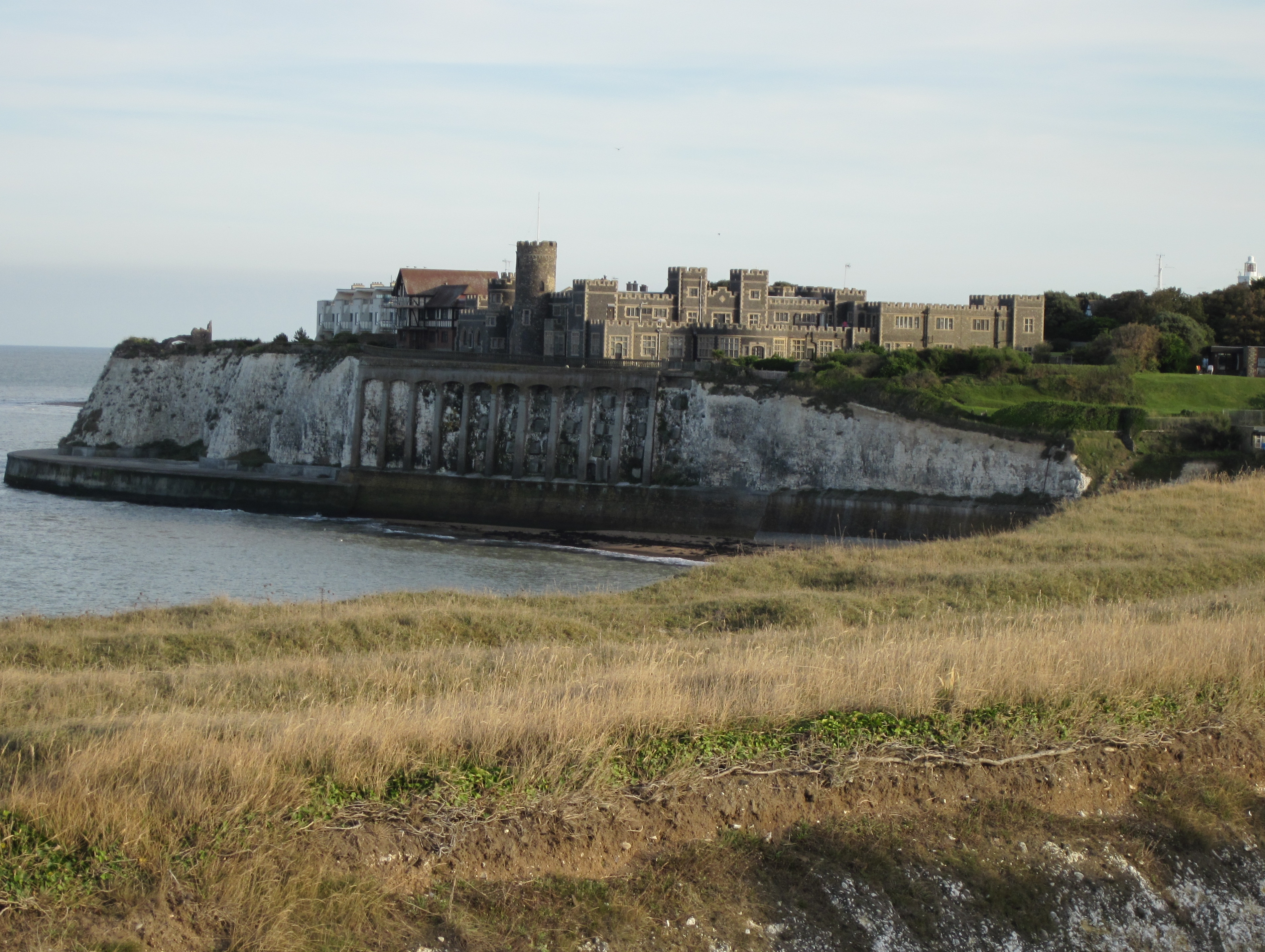|
Dippy (Diplodocus Carnegii)
Dippy is a composite ''Diplodocus'' skeleton in Pittsburgh's Carnegie Museum of Natural History, and the holotype of the species ''Diplodocus carnegii''. It is considered the most famous single dinosaur skeleton in the world, due to the numerous plaster casts donated by Andrew Carnegie to several major museums around the world at the beginning of the 20th century. The casting and distribution of the skeleton made the word ''dinosaur'' a household word; for millions of people it became the first dinosaur they had ever seen. It was also responsible for the subsequent popularity of the entire genus ''Diplodocus'', since the skeleton has been on display in more places than any other sauropod dinosaur."''Diplodocus''." In: Dodson, Peter & Britt, Brooks & Carpenter, Kenneth & Forster, Catherine A. & Gillette, David D. & Norell, Mark A. & Olshevsky, George & Parrish, J. Michael & Weishampel, David B. ''The Age of Dinosaurs''. Publications International, Ltd. pp. 58–59. . Its discov ... [...More Info...] [...Related Items...] OR: [Wikipedia] [Google] [Baidu] |
Medicine Bow, Wyoming
Medicine Bow is a town in Carbon County, Wyoming, United States. Its population was 284 at the 2010 census. History The community largely owes its existence to the first transcontinental railroad, built through the area in 1868. A post office called Medicine Bow has been in operation since 1869. The community was named after the Medicine Bow River. Dippy, a well-known dinosaur skeleton, was found in a quarry nearby around 1898. In 1899, fossil hunters for the American Museum of Natural History and the Field Museum stayed in or near the town during their search for large dinosaur skeletons.Brinkman, P. D. (2010). The second Jurassic dinosaur rush. In ''The Second Jurassic Dinosaur Rush''. University of Chicago Press. The town had a railroad and was near the fossilferous sedimentary hills from the Jurassic Morrison Formation, making it an important stopping location for paleontologists, with fossils of ''Diplodocus'' and ''Brontosaurus'' found nearby at Como Bluff by the two in ... [...More Info...] [...Related Items...] OR: [Wikipedia] [Google] [Baidu] |
William Jacob Holland
Rev William Jacob Holland FRSE LLD (August 16, 1848 – December 13, 1932) was the eighth Chancellor of the University of Pittsburgh (1891–1901) and Director of the Carnegie Museums of Pittsburgh. He was an accomplished zoologist and paleontologist, as well as an ordained Presbyterian minister. Life Holland was born August 16, 1848 in Jamaica, West Indies, the son of Rev Francis R Holland and his wife, Eliza Augusta Wolle. He spent his early years in Salem, North Carolina, later attending Nazareth Hall, a Moravian boys' school in Pennsylvania, followed by Amherst College, (A.B., 1869), and Princeton Theological Seminary (1874). At Amherst Holland's roommate was a student from Japan, causing Holland to become interested in Japanese and to learn that language well before it was a common pursuit in the United States. In 1874 he moved to Pittsburgh, Pennsylvania to become pastor of the Bellefield Presbyterian Church in the city's Oakland neighborhood. At this time Holland was also ... [...More Info...] [...Related Items...] OR: [Wikipedia] [Google] [Baidu] |
The Blitz
The Blitz was a German bombing campaign against the United Kingdom in 1940 and 1941, during the Second World War. The term was first used by the British press and originated from the term , the German word meaning 'lightning war'. The Germans conducted mass air attacks against industrial targets, towns, and cities, beginning with raids on London towards the end of the Battle of Britain in 1940 (a battle for daylight air superiority between the Luftwaffe and the Royal Air Force over the United Kingdom). By September 1940, the Luftwaffe had lost the Battle of Britain and the German air fleets () were ordered to attack London, to draw RAF Fighter Command into a battle of annihilation.Price 1990, p. 12. Adolf Hitler and Reichsmarschall Hermann Göring, commander-in-chief of the Luftwaffe, ordered the new policy on 6 September 1940. From 7 September 1940, London was systematically bombed by the Luftwaffe for 56 of the following 57 days and nights. Most notable was a large dayligh ... [...More Info...] [...Related Items...] OR: [Wikipedia] [Google] [Baidu] |
Archibald Geikie
Sir Archibald Geikie (28 December 183510 November 1924) was a Scottish geologist and writer. Early life Geikie was born in Edinburgh in 1835, the eldest son of Isabella Thom and her husband James Stuart Geikie, a musician and music critic. The elder brother of James Geikie, he was educated at Edinburgh High School and University of Edinburgh. Career In 1855 was appointed an assistant on the British Geological Survey. Wielding the pen with no less facility than the hammer, he inaugurated his long list of works with ''The Story of a Boulder; or, Gleanings from the Note-Book of a Geologist'' (1858). His ability at once attracted the notice of his chief, Sir Roderick Murchison, with whom he formed a lifelong friendship, and whose biographer he subsequently became. With Murchison some of his earliest work was done on the complicated regions of the schists of the Scottish Highlands; and the small geological map of Scotland published in 1862 was their joint work: a larger map was ... [...More Info...] [...Related Items...] OR: [Wikipedia] [Google] [Baidu] |
John Lubbock, 1st Baron Avebury
John Lubbock, 1st Baron Avebury, 4th Baronet, (30 April 183428 May 1913), known as Sir John Lubbock, 4th Baronet from 1865 until 1900, was an English banker, Liberal politician, philanthropist, scientist and polymath. Lubbock worked in his family company as a banker but made significant contributions in archaeology, ethnography, and several branches of biology. He coined the terms "Paleolithic" and "Neolithic" to denote the Old and New Stone Ages, respectively. He helped establish archaeology as a scientific discipline, and was influential in debates concerning evolutionary theory. He introduced the first law for the protection of the UK's archaeological and architectural heritage. He was also a founding member of the X Club. Early life John Lubbock was born in 1834, the son of Sir John Lubbock, 3rd Baronet, a London banker, and was brought up in the family home of High Elms Estate, near Downe in Kent. The family had two homes, one at 29 Eaton Place, Belgrave Square where Jo ... [...More Info...] [...Related Items...] OR: [Wikipedia] [Google] [Baidu] |
Ray Lankester
Sir Edwin Ray Lankester (15 May 1847 – 13 August 1929) was a British zoologist.New International Encyclopaedia. An invertebrate zoologist and evolutionary biologist, he held chairs at University College London and Oxford University. He was the third Director of the Natural History Museum, London, and was awarded the Copley Medal of the Royal Society. Life Ray Lankester was born on 15 May 1847 on Burlington Street in London, the son of Edwin Lankester, a coroner and doctor-naturalist who helped eradicate cholera in London, and his wife, the botanist and author Phebe Lankester. Ray Lankester was probably named after the naturalist John Ray: his father had just edited the memorials of John Ray for the Ray Society. In 1855 Ray went to boarding school at Leatherhead, and in 1858 to St Paul's School. His university education was at Downing College, Cambridge, and Christ Church, Oxford; he transferred from Downing, after five terms, at his parents' behest because Christ Church ... [...More Info...] [...Related Items...] OR: [Wikipedia] [Google] [Baidu] |
Plaster Of Paris
Plaster is a building material used for the protective or decorative coating of walls and ceilings and for moulding and casting decorative elements. In English, "plaster" usually means a material used for the interiors of buildings, while "render" commonly refers to external applications. Another imprecise term used for the material is stucco, which is also often used for plasterwork that is worked in some way to produce relief decoration, rather than flat surfaces. The most common types of plaster mainly contain either gypsum, lime, or cement,Franz Wirsching "Calcium Sulfate" in Ullmann's Encyclopedia of Industrial Chemistry, 2012 Wiley-VCH, Weinheim. but all work in a similar way. The plaster is manufactured as a dry powder and is mixed with water to form a stiff but workable paste immediately before it is applied to the surface. The reaction with water liberates heat through crystallization and the hydrated plaster then hardens. Plaster can be relatively easily worked wit ... [...More Info...] [...Related Items...] OR: [Wikipedia] [Google] [Baidu] |
Skibo Castle
Skibo Castle (Scottish Gaelic: ''Caisteal Sgìobail'') is located to the west of Dornoch in the Highland county of Sutherland, Scotland overlooking the Dornoch Firth. Although largely of the 19th century and early 20th century, when it was the home of industrialist Andrew Carnegie, its origins go back much earlier. Andrew Chirnside was a previous owner. It is now operated as The Carnegie Club, a members-only residential club, offering members and their guests accommodation in both the castle and estate lodges, a private links golf course and a range of activities including clay pigeon shooting, tennis and horse riding. Etymology According to William J. Watson, Skibo is the anglicisation of Scottish Gaelic ''Sgìobal'', which in turn comes from an Old Norse name meaning either firewood-steading or Skithi's steading. History The first record of Skibo Castle is a charter from 1211. From its early history, the castle was a residence of the Bishops of Caithness. Skibo Castle remained ... [...More Info...] [...Related Items...] OR: [Wikipedia] [Google] [Baidu] |
British Museum
The British Museum is a public museum dedicated to human history, art and culture located in the Bloomsbury area of London. Its permanent collection of eight million works is among the largest and most comprehensive in existence. It documents the story of human culture from its beginnings to the present.Among the national museums in London, sculpture and decorative and applied art are in the Victoria and Albert Museum; the British Museum houses earlier art, non-Western art, prints and drawings. The National Gallery holds the national collection of Western European art to about 1900, while art of the 20th century on is at Tate Modern. Tate Britain holds British Art from 1500 onwards. Books, manuscripts and many works on paper are in the British Library. There are significant overlaps between the coverage of the various collections. The British Museum was the first public national museum to cover all fields of knowledge. The museum was established in 1753, largely b ... [...More Info...] [...Related Items...] OR: [Wikipedia] [Google] [Baidu] |
Edward VII
Edward VII (Albert Edward; 9 November 1841 – 6 May 1910) was King of the United Kingdom of Great Britain and Ireland and Emperor of India, from 22 January 1901 until his death in 1910. The second child and eldest son of Queen Victoria and Prince Albert of Saxe-Coburg and Gotha, and nicknamed "Bertie", Edward was related to royalty throughout Europe. He was Prince of Wales and heir apparent to the British throne for almost 60 years. During the long reign of his mother, he was largely excluded from political influence and came to personify the fashionable, leisured elite. He travelled throughout Britain performing ceremonial public duties and represented Britain on visits abroad. His tours of North America in 1860 and of the Indian subcontinent in 1875 proved popular successes, but despite public approval, his reputation as a playboy prince soured his relationship with his mother. As king, Edward played a role in the modernisation of the British Home Fleet and the reorganis ... [...More Info...] [...Related Items...] OR: [Wikipedia] [Google] [Baidu] |
Diplodocus (replica)
''Diplodocus'' (, , or ) was a genus of diplodocid sauropod dinosaurs, whose fossils were first discovered in 1877 by Samuel Wendell Williston, S. W. Williston. The generic name, coined by Othniel Charles Marsh in 1878, is a Neo-Latin term derived from Ancient Greek, Greek διπλός (''diplos'') "double" and δοκός (''dokos'') "beam", in reference to the double-beamed chevron (anatomy), chevron bones located in the underside of the tail, which were then considered unique. The genus of dinosaurs lived in what is now mid-western North America, at the end of the Jurassic Period (geology), period. It is one of the more common dinosaur fossils found in the middle to upper Morrison Formation, between about 154 and 152 million years ago, during the late Kimmeridgian, Kimmeridgian Age. The Morrison Formation records an environment and time dominated by gigantic sauropod dinosaurs, such as ''Apatosaurus'', ''Barosaurus'', ''Brachiosaurus'', ''Brontosaurus'', and ''Camarasaurus'' ... [...More Info...] [...Related Items...] OR: [Wikipedia] [Google] [Baidu] |
Diplodocus At The CMNH 2
''Diplodocus'' (, , or ) was a genus of diplodocid sauropod dinosaurs, whose fossils were first discovered in 1877 by S. W. Williston. The generic name, coined by Othniel Charles Marsh in 1878, is a neo-Latin term derived from Greek διπλός (''diplos'') "double" and δοκός (''dokos'') "beam", in reference to the double-beamed chevron bones located in the underside of the tail, which were then considered unique. The genus of dinosaurs lived in what is now mid-western North America, at the end of the Jurassic period. It is one of the more common dinosaur fossils found in the middle to upper Morrison Formation, between about 154 and 152 million years ago, during the late Kimmeridgian Age. The Morrison Formation records an environment and time dominated by gigantic sauropod dinosaurs, such as ''Apatosaurus'', ''Barosaurus'', ''Brachiosaurus'', ''Brontosaurus'', and ''Camarasaurus''. Its great size may have been a deterrent to the predators ''Allosaurus'' and ''Ceratosa ... [...More Info...] [...Related Items...] OR: [Wikipedia] [Google] [Baidu] |









.jpg)